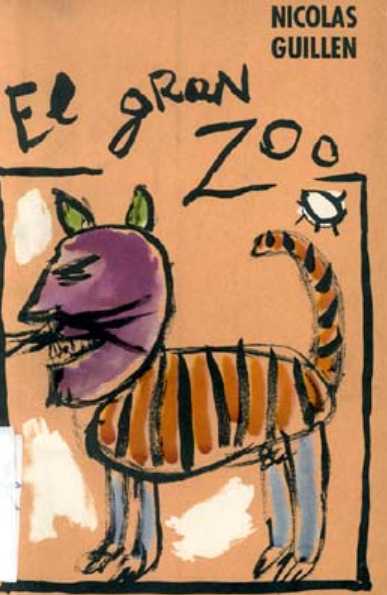4.1.1.14.10 Nicolás Guillén’s poetry collection, “The Great Zoo,” from 1967

“The Great Zoo” is a text by Nicolás Guillén that doesn’t quite fit in with the rest of his poetic output, perhaps because the social needs already satisfied have given way to other aesthetic concerns that until then hadn’t occupied a significant place in his poetry. The text has rather foreign antecedents, in medieval bestiaries and even Aesop’s fables and others that were inscribed in their very flow through time.
Although the topic is not common in Guillén’s poetic production, it does maintain stylistic coherence both in terms of his power of poetic synthesis, of capturing rather diffuse realities in precise images and, above all, the same transcendent sound, with traces of drum and guitar, that he had been cultivating in artistic crescendo throughout almost all of his poetic pieces.
The well-known method of representing human attitudes through animal behavior, with a moral that almost always contains an ethical precept or a guideline of popular wisdom, was enriched by Guillén with his unique range of rhetorical resources, where the interplay between the human and the animal is not a mere transposition of human types and behaviors.
The approach of almost all of the texts has a measured ironic flavor and a hint of contemporaneity, both in the situations they refer to and in the aesthetic procedures they employ. In this sense, they use parentheses, elliptical phrases, real or purely invented scientific terms, and juxtapositions that aim to present a reality as it is, whose “poeticization” is not obvious.
The text uses avant-garde methods to add topical content and new means of expression. The playful tone that runs through the text shows that tragedy was no longer in the foreground, but that man’s transformative striving should never cease, despite the dysfunctional nature of any field, in order to achieve higher levels of happiness, with a philanthropic spirit that does not stop with the vibrant events of the island.








